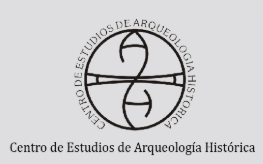Military terrain analysis in battlefield archaeology:
preliminary steps at Pavón (1861)
DOI:
https://doi.org/10.35305/tpahl.v12i3.119Keywords:
military terrain analysis, KOCOA, Pavón battlefieldAbstract
The analysis of terrain from a specifically military standpoint constitutes an essential tool for the study of past battles. The main assumption underlying it is that the terrain, including both natural and cultural features, influences battles in a decisive way, both strategically and tactically, conditioning the development and outcome of the actions. This is why historical and archaeological research of battlefields has started to incorporate this analytical perspective routinely, with the analytical process developed in the US known as KOCOA standing out as one of the most employed by historians and archaeologists alike. In this paper, we apply this protocol to the analysis of the Pavón battlefield, where a crucial battle in Argentine history took place on September 17, 1861. The different dimensions that define the configuration of the battlefield are analyzed, contrasting them with existing historiographical interpretations and with the archaeological evidence recovered so far.







